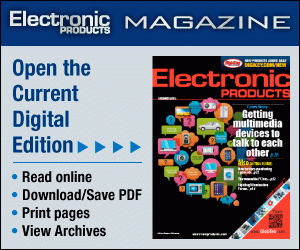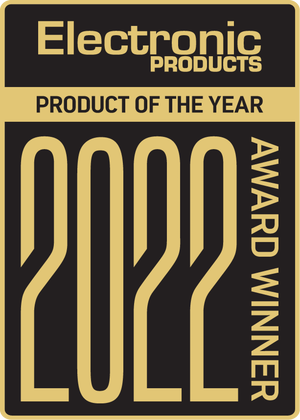Efficiency comparison of synchronous buck converter PoL architectures
The differences and tradeoffs in light-load efficiency for PoL architectures are described
BY RICH NOWAKOWSKI and BRIAN KING
Texas Instruments, Dallas, TX
http://www.ti.com
Energy efficiency is a growing concern, especially when trying to meet Energy Star criteria. Designers want to improve light-load efficiency without increasing cost. This is especially true in high-volume consumer electronics applications such as a set-top boxes, where reducing the product’s power consumption by one watt can save megawatts from the grid. The power management semiconductor industry has developed low cost, higher current synchronous buck dc/dc converters that employ features to improve efficiency at lower stand-by power levels. This article explores the differences in light-load efficiency by comparing two complete point-of-load (PoL) architectures with and without the light-load efficiency feature, and examine other tradeoffs such as noise, cost, external components count, and ease of implementation. Both architectures will post-regulate from a 12-V bus provided by the same green mode off-line power supply for a consistent comparison.
Energy Star requirements for set-top boxes
Designing up front for energy efficiency is a good design practice and stewardship in high-volume applications. To meet Energy Star requirements for a set-top box, the unit is categorized depending on its base functionality and an energy consumption allowance is assigned1. Tiers are established for improving of efficiency in the future. Energy Star provided the tier two limits as preliminary targets in version 2 of their set-top box requirements. Both tier one and tier two limits are soon to be updated by a version 3, which will set a June 1, 2011, effective date for tier one and June 1, 2013 for tier two. For example, a terrestrial set-top box is allowed to consume only 27 kWh/yr for the tier one limits, and 22 kWh/yr for tier two. If additional functionalities are included in the set-top box, then the allowable energy consumption is increased. A home network interface included within the set-top box is allowed an additional 20 kWh/yr for tier one, and only 10 kWh/yr for tier two. Investigating every avenue to reduce power consumption will increase the chances of meeting the evolving Energy Star requirements.
Architecture demonstration
A typical set-top box power architecture consists of an off-line power supply that accepts a 85 to 265-Vac input from the mains and converts to a regulated 12-Vdc bus. This 12-V supply provides around 4 A, depending on the additional functionalities integrated into the box, such as a removable media player, additional tuners, or an integrated digital video recorder. From the 12-V bus, typical PoL voltages are 5, 3.3, 2.5, 1.8, and 1.2 V, which are common in many PoL architectures. The output currents of each voltage are usually less than 3-A. For this comparison, an off-line flyback power supply is constructed with a 12-V output along with a PoL architecture at the above voltages. Two identical architectures are compared using two different dc/dc converters. One converter employs an auto-skip feature to improve light-load efficiency, and the other is a standard fixed-frequency dc/dc converter. Both devices are pin-compatible and use the same external components. To demonstrate the power savings of the auto-skip feature in a typical set-top box application, we used the TPS54325 and TPS54326. An evaluation board was built containing the off-line flyback and five PoL dc/dc converters with integrated light-load efficiency.

Table 1. Dc/dc converters with and without an auto-skip mode.
Green-mode ac/dc controller operation
The flyback converter is attractive for set-top box ac/dc applications because it provides an inexpensive, isolated output and uses few external components. Operating the flyback converter in discontinuous conduction mode (DCM) is especially attractive because it eliminates reverse recovery losses in the output rectifier, which improves efficiency. This demonstration uses the UCC28610 green-mode flyback controller shown in Fig. 1 in a 40-W flyback configuration designed to meet Energy Star external power supplies (EPS) version 2.0 efficiency requirements during active-load and no-load power consumption.
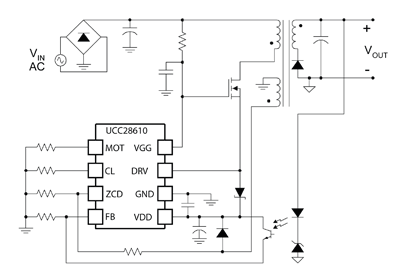
Fig. 1. Simplified schematic for UCC28610 green-mode controller.
For set-top boxes that use an EPS, the external supply must also be Energy Star qualified or meet the no-load and active-mode efficiency levels provided in the Energy Star program requirements for single voltage ac/ac and ac/dc EPS, version 2.0. Without using any energy-saving techniques, a traditional fixed-frequency pulse-width modulator (PWM) flyback converter can easily dissipate too much energy and prevent a product from achieving Energy Star compliance. To save energy throughout the load level, a green-mode flyback employs numerous loss-reducing techniques including valley switching, variable frequency control, a cascode connection to the power MOSFET, and pulse skipping at light loads.
Auto-skip mode
The dc/dc converter’s auto-skip feature traditionally has been used in applications that are powered by batteries, such as cell phones and notebook PCs. However, dc/dc converters with auto-skip are becoming more prevalent in the market for non-portable applications due to Energy Star and European Code of Conduct (ECC) requirements. The TPS54326, shown in Fig. 2 , is a dc/dc converter targeted towards consumer electronics applications that integrates an auto-skip mode feature.

Fig. 2. Point-of-load dc/dc converter with light-load efficiency.
The inductor current in a buck converter is a triangle wave. As the output current decreases from a heavy-load condition, the inductor current is reduced and the rippled valley of the triangle wave eventually touches the zero level at the boundary between continuous conduction mode (CCM) and DCM. With the auto-skip feature, the rectifying MOSFET is turned off when the converter detects zero current in the inductor. As the load current further decreases, the on-time is held nearly constant so that the off-time is extended and the switching frequency is reduced to maintain regulation. As a result, the power MOSFETs and inductor are idle for longer periods of time and conduction losses are greatly reduced. The point at which the dc/dc converter will enter the light-load efficiency mode is shown in Equation 1.

Equation 1
Converter efficiency results
The efficiency measurements of each POL converter were taken from the demonstration board with and without auto-skip mode. A logarithmic scale is used to show detail towards the lower end of the load current domain. Figure 3 shows the efficiency plot for all five dc/dc converters ranging from 10 mA to the full 3-A rating of each device. At loads under 300 mA, the efficiency measurements are very similar. This is because the output inductor core loss dominates at light loads. The same inductor was used for each output voltage and its core loss was roughly proportional to output voltage. The efficiency decreases quickly below 100 mA. At heavier loads above 1 A, on-resistance losses dominate. Because the output power is proportional to the output voltage while the power losses are less dependent on the output voltage, the efficiency is lower at lower output voltages.
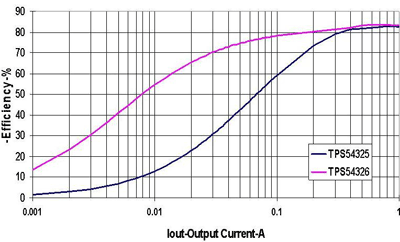
Fig. 3. Efficiency without auto skip mode.
The efficiency graphs in Fig. 4 show the effects of auto-skip implementation under the same exact operating conditions and external components as the architecture without auto-skip mode. At loads over 400 mA, the efficiency results are very similar to the results in Fig. 3. When the device enters auto-skip operation, the synchronous rectifier is turned off. The efficiency of the dc/dc converter without auto-skip mode is much lower due to circulating currents, switching losses, and core losses occurring at 700 kHz. In auto-skip mode, the circulating currents are inhibited and the switching frequency has an inverse relationship to the output current, thereby greatly improving efficiency at light loads.
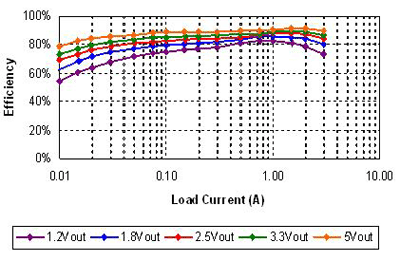
Fig. 4. Efficiency with auto-skip mode.
It can be difficult to correlate an efficiency percentage directly with power savings at first glance. It is also difficult to calculate the power losses when a dc/dc converter is in auto-skip mode. Therefore, the results are summarized in Table 2 to show the actual power loss for each rail at different load levels with and without the auto-skip feature. The power losses with auto-skip are significantly lower than the architecture that did not employ the light-load efficiency improving feature. For example, at 10 mA, the total power loss of the auto-skip architecture is 58 mW, while the total power loss for the architecture without auto-skip is about 977 mW. Also, lower output voltages show lower power dissipation, primarily due to the reduced core loss.

Table 2. Power loss in Watts for each rail with and without auto-skip.
To put both power architectures in perspective, the combined efficiency and power loss measurements are shown in Table 3. The measurements show each rail loaded with the same output current. For example, the total efficiency of the auto-skip architecture when all five PoL power rails are loaded at 10 mA is 70% and the total power dissipation is 58 mW. Note that the architecture without auto-skip dissipates about 1 W at loads under 200 mA, which translates to 8.7 kWh/yr. This takes away from the energy budgeted for the rest of the system by the Energy Star requirements. For the consumer, assuming $0.20/kWh for the cost of electricity, this can mean $2/yr energy cost savings.
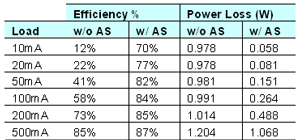
Table 3: Total power loss and efficiency with and without auto-skip mode.
Designers may have the option to disable certain features of the set-top box to help reduce power consumption in a state of low activity such as a sleep or standby mode. Disabling the PoL supply shuts down power to the load. The shutdown quiescent current of the dc/dc converter now becomes an important specification. Most dc/dc converters have a shutdown quiescent current well below 20 uA. The measured shutdown quiescent current for the TPS54326 is 3.4 uA.
Tradeoffs to light-load efficiency
When a dc/dc converter enters auto-skip mode, the PWM pulses are further apart causing the peak-to-peak output ripple voltage to increase. In most cases, the set-top box is not sending or receiving data and the tuner circuitry is less likely to be affected by noise. However, special attention needs to be paid to the ripple voltage to make sure it does not hamper performance results. Some dc/dc converters, like the adaptive on-time TPS54326, do not require loop compensation, which simplifies the design. When a current-mode or voltage-mode dc/dc enters discontinuous conduction mode during light loads, the transfer function and compensation loop equations change, so pay special attention to the manufacturer’s compensation guidelines. If the device has the auto-skip feature, the datasheet should explain how to compensate the device properly for discontinuous conduction mode.
Dc/dc converters with auto-skip mode for consumer applications are starting to gain more traction. At this time, the market can accept a slight cost premium for devices with this light-load feature, but as the market saturates with more competition, the cost adder will be almost negligible with respect to the total power management system.
When designers need to reduce power consumption from every angle in their product, the power management point-of-load architecture must not be overlooked. Selecting high efficiency synchronous buck dc/dc converters with a built in auto-skip mode is an easy solution to save hundreds of milliwatts of dissipation under light-load conditions, translating to several kWh/yr, without sacrificing cost or performance. These same dc/dc converters also provide high-efficiency synchronous rectification for high-efficiency at heavy loads as well. You can use the dc/dc converter forum on the TI E2ETM Community to discuss implementing auto-skip mode in your application. ■
Advertisement
Learn more about Texas Instruments

